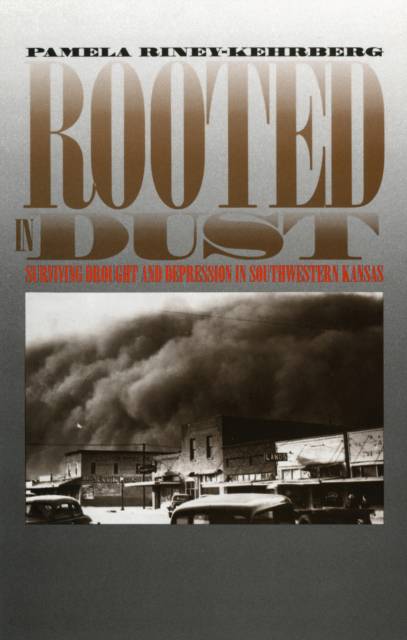
- Retrait gratuit dans votre magasin Club
- 7.000.000 titres dans notre catalogue
- Payer en toute sécurité
- Toujours un magasin près de chez vous
- Retrait gratuit dans votre magasin Club
- 7.000.0000 titres dans notre catalogue
- Payer en toute sécurité
- Toujours un magasin près de chez vous
38,45 €
+ 76 points
Description
Fontell Littrell's grandmother was a devout Latter-Day Saint. But when Fontell's father turned to bootlegging and poker to support an extended family of ten during the dirty thirties, her grandmother took it in stride. "The Lord works in mysterious ways, his miracles to perform," she rationalized. The Litrells' story and those of thousands of others who rode out the dust bowl in southwest Kansas are the focus of Pamela Riney-Kehrberg's study of survival in a drought-ridden decade. Unlike other historians, who have dwelt on those who fled hardship, Riney-Kehrberg concentrates on the majority--three-quarters of the population--who endured. Examining the social impact of drought and depression, she illustrates how both farm and town families dealt with the deprivation by finding odd jobs, working in government programs, or depending on federal and private assistance. Years of tribulation, she shows, affected standards of living, family relationships, city and county finances, land ownership, farm prices and production, population shifts, and politics (traditionally staunchly Republican, southwest Kansas twice voted for Roosevelt). Looking also at the environmental impact, Riney-Kehrberg presents both the negative and positive sides of farming practices and governmental intervention. Most Kansans persevered for nearly ten years, Riney-Kehrberg emphasizes, and how they adapted indelibly altered their outlook and plans for the future More than fifty years later, the devastating dust storms continue to affect agricultural practices and policy and the population of southwest Kansas.
Spécifications
Parties prenantes
- Auteur(s) :
- Editeur:
Contenu
- Nombre de pages :
- 264
- Langue:
- Anglais
- Collection :
Caractéristiques
- EAN:
- 9780700608393
- Date de parution :
- 12-09-94
- Format:
- Livre broché
- Format numérique:
- Trade paperback (VS)
- Dimensions :
- 154 mm x 229 mm
- Poids :
- 358 g

Les avis
Nous publions uniquement les avis qui respectent les conditions requises. Consultez nos conditions pour les avis.






